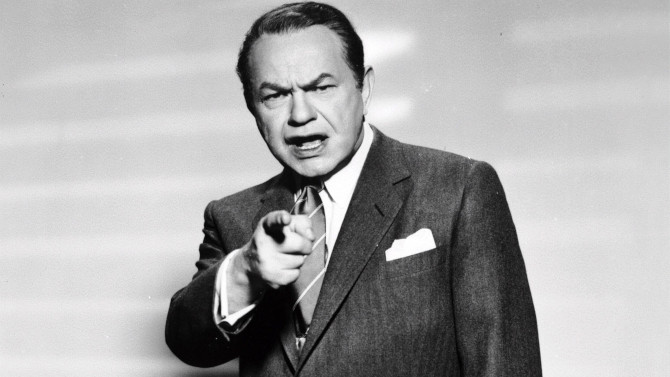
A Law Unto Themselves
The front door to an apartment swings open... an unseen figure walks through the living area and approaches a beautiful blonde woman wearing a robe as she walks around the bathroom... he then deliberately empties the barrel of his revolver into her – this is the jarring cold opening to the film noir Illegal (1955), and one thing is for sure, it knows how to grab your attention. Funnily enough, this was the third adaptation of the 1929 play “The Mouthpiece” by Frank J. Collins, following Mouthpiece (1932) and The Man Who Talked Too Much (1940) – and they say movies are remade too much today. Flash to Victor Scott (Edward G. Robinson), a district attorney who is wise to all the angles and is graced with a silver tongue. With an unyielding desire to win (he got it from growing up and fighting his way out of the slums), he argues every case like it is his last.
-
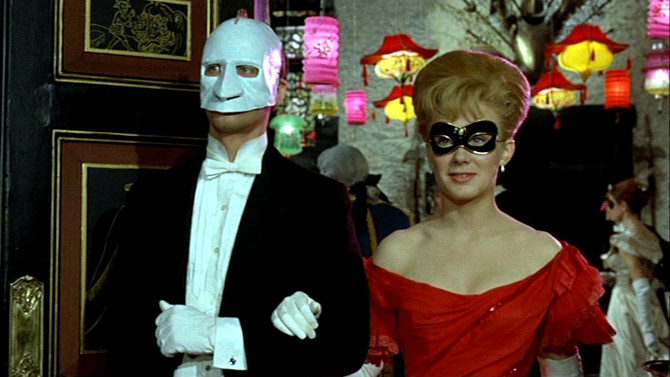
Masquerade Charade
The Kiss of the VampireOctober 11, 2024It’s just never a good sign when you’re honeymooning in the early 20th century Bavarian countryside and your brand new automobile runs out of petrol. The opening of a rather lesser known Hammer horror film (following a little bit of early staking action), The Kiss of the Vampire (1963), directed by Don Sharp, is shockingly without stalwarts Christopher Lee or Peter Cushing. The couple: Gerald (Edward de Souza) and Marianne (Jennifer Daniel), are left with little option. With the former walking ahead hoping for some aid, the latter is soon scared by a storm, bumping into the rather inimical Professor Zimmer (Clifford Evans)... coming across more like a morose vagabond than a learned man. All the while, a man from a hilltop manor, Dr. Ravna (Noel Willman), looks on with intrigue with the use of his telescope.
-
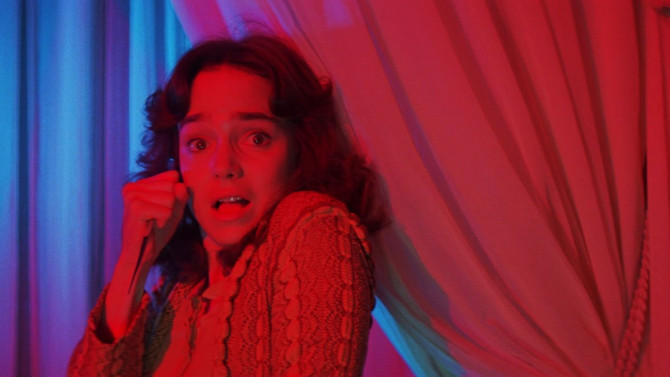
On Your Toes
SuspiriaSeptember 23, 2024Alfred Hitchcock: “When we tell a story in cinema we should resort to dialogue only when it's impossible to do otherwise. I always try to tell a story in the cinematic way, through a succession of shots and bits of film in between.” It is quite clear that Dario Argento took this quote from the Master of Suspense, Alfred Hitchcock, to heart when co-writing and directing his 1977 horror film Suspiria. An atmospheric mood piece, for much of its runtime, it plays as close to a silent film as you can get.
-
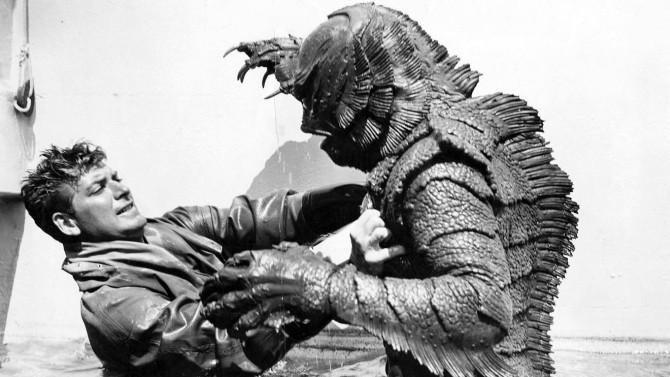
Kill Gill
Revenge of the CreatureSeptember 20, 2024If you’re looking for a cool piece of trivia you probably didn’t know, Revenge of the Creature (1955), the sequel to the Universal monster movie classic Creature from the Black Lagoon, holds the distinction of being Clint Eastwood’s first feature film (a small role as Lab Technician Jennings... his second role for anyone asking – Francis in the Navy). Helmed once again by Jack Arnold, the story picks up quite promptly after where the original left off. Having heard of the impressive gill-man specimen that has been seen in an Amazonian lagoon, the Ocean Harbor Oceanarium in Florida sends off a small but well prepared team to capture the unknown species with the help of the Captain who helmed the first venture, Lucas (Nestor Paiva returning). After a bit of a struggle, they’re able to transport it back from the Amazon, chaining it in a tank in the above mentioned tourist attraction and zoology study centre.
-
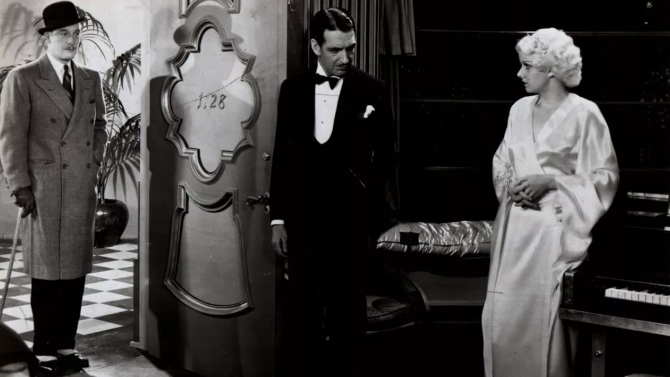
Wise Gals
Three Wise GirlsSeptember 13, 2024It’s funny how things have changed so much over the years, but at the same time, human beings seem to have changed so little. Single men complain about women, while single women complain about men just as much... something discussed quite frequently in the romantic dramedy Three Wise Girls (1932), directed by William Beaudine and based upon Wilson Collison’s novel “Blonde Baby”. Cassie Barnes (Jean Harlow) is a small town soda jerk... and with her shapely body and platinum blonde locks, she attracts all the wrong kinds of men. Having had enough of the lecherous men back home, she makes the move to New York City, quickly finding work (and a whole new crop of creeps) while working the ice cream and soft drink game.
-
Comedy Team, Female Style
 Let's Do ThingsCatch-As Catch-CanMarch 3, 2024
Let's Do ThingsCatch-As Catch-CanMarch 3, 2024With the massive success of Laurel and Hardy, who producer Hal Roach had paired together after signing them separately in 1926 (they would remain with his studio until 1940), the man had the bright idea of creating a female counterpart duo, bringing together Zasu Pitts and Thelma Todd. The team would make seventeen popular shorts from 1931-33, their first two, Let’s Do Things and Catch-As Catch-Can, looked at here today. Like all good comedy teams, you have two very different character types. Zasu comes across as the slightly depressed, nervous and fretful brunette, while Thelma is a much more vibrant and colourful blonde dame. . . the former’s desperation often dragging her more put together friend into rather unorthodox situations. In Let’s Do Things, they find themselves as employees selling music for a giant department store... while looking for a way out of their dead-end jobs.
-

Wartime Blonde Bombshell
My Favorite BlondeFebruary 22, 2024Comedic war-tinged movies were all the rage in Hollywood during World War II... a way to ease the tension while keeping morale up. Think Charlie Chaplin’s The Great Dictator (1940), Abbott and Costello’s quasi trilogy of Buck Privates, In the Navy, and Keep `Em Flying (all of which were released in 1941), Ernst Lubitsch’s To Be or Not to Be (1942), as well as today’s feature, the Sidney Lanfield directed, Bob Hope starring My Favorite Blonde (also 1942). A wartime crime caper woven within a Bob Hope vehicle, Karen Bentley (Madeleine Carroll – The 39 Steps), is a British secret agent who is given the unenviable task of delivering a cipher after her partner is murdered by a ruthless group of German spies led by Madame Stephanie Runick (Gale Sondergaard – who was also in The Cat and the Canary, Never Say Die, and Road to Rio with Bob Hope).

